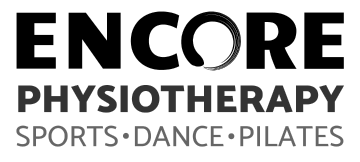Manual Therapy
Manual therapy is the art and science of using skilled, hands-on techniques to restore movement, relieve pain, and improve function. At its core, manual therapy is the therapeutic use of touch, backed by a deep understanding of anatomy, biomechanics, and neurophysiology.
Human touch is a powerful tool—not just in rehabilitation, but in building trust, comfort, and confidence between the therapist and the patient. What once focused primarily on muscles and joints has now expanded to include fascia, nerves, and even internal organs, addressing movement restrictions at multiple levels.
Manual therapy is often used in combination with exercise, education, and movement training to achieve long-term recovery. By applying specific techniques, we help restore normal joint mobility, reduce muscle tension, and facilitate pain-free movement.
Key Benefits
- Pain Relief: : Gentle joint mobilisation reduces pain sensitivity, relaxes muscles, alleviates pressure on nerves, and improves circulation. This helps reduce swelling and inflammation while promoting the drainage of waste metabolites.
- Improved Range of Motion: : Manual therapy helps restore mobility in stiff or restricted joints, making it particularly effective for conditions like frozen shoulder, arthritis, or post-surgical stiffness.
- Reduced Muscle Tension: Techniques such as myofascial release and trigger point therapy help relieve tightness, reduce muscle spasms, and promote overall relaxation.
- Enhanced Circulation: Soft tissue techniques stimulate blood flow, ensuring oxygen and nutrients reach injured tissues while supporting the body’s natural healing process.
- Stress & Anxiety Reduction: Manual therapy has a calming effect on the nervous system, triggering the parasympathetic response, which reduces stress, anxiety, and overall muscular tension.
- Restoration of Normal Joint Alignment: Injuries, poor posture, and repetitive strain can cause joint misalignment. Gentle joint mobilisation and manipulation help improve movement efficiency and restore normal biomechanics.
- Post-Injury Recovery: After sprains, strains, or dislocations, manual therapy promotes healing by reintroducing safe movement, reducing stiffness, and improving tissue resilience.
Key Techniques
At Encore Physiotherapy, we use a variety of hands-on techniques tailored to each individual’s needs.
- Joint Mobilisation
Joints naturally have subtle internal movements that allow for smooth, pain-free motion. When mobility is restricted, movements feel stiff, painful, or difficult. Mobilisation techniques help:
● Reduce pain by desensitizing nerve endings.
● Restore lost range of motion by improving lubrication and joint mechanics.
● Useful for conditions like frozen shoulder, osteoarthritis, and post-injury stiffness.
- Joint Manipulation
Commonly recognised for its audible “pop”, manipulation is a high-velocity, low-amplitude thrust technique that helps:
● Reduce joint stiffness and improve mobility.
● Release trapped gases within the joint, leading to an immediate sense of relief.
● Provide short-term pain relief for conditions like spinal stiffness and facet joint dysfunction.
- Therapeutic Massage
Unlike general relaxation massage, therapeutic massage is targeted and clinically guided. By addressing specific tissue layers (skin, fascia, muscle, and joint), massage therapy helps:
● Promote blood circulation, improving oxygenation of tissues.
● Reduce swelling by facilitating the drainage of lymphatic fluid and waste metabolites.
● Restore tissue pliability, helping muscles move more efficiently.
- Nerve Mobilisation
Nerves are dynamic, mobile structures that glide through the body. Conditions like herniated discs, carpal tunnel syndrome, and sciatica can cause nerve irritation, leading to tingling, sharp pain, and weakness. Nerve mobilisation involves:
● Guided stretching-like movements to release tension along the nerve path.
● Restoring normal nerve function by reducing compression and improving mobility.
● A gradual home exercise program to maintain progress.
- Fascial Manipulation
Fascia is a continuous, web-like connective tissue that surrounds muscles, ligaments, tendons, and organs. It plays a crucial role in movement coordination, structural integrity, and pain sensitivity.
Factors affecting fascia:
● Poor posture, trauma, chronic stress, and dehydration can cause restrictions and pain.
● Fascia is highly innervated and is believed to store physical and emotional tension.
Treatment involves:
● Detailed movement assessment to identify restricted areas.
● Hands-on fascial release techniques to restore elasticity and function.
● Possible temporary systemic responses (mild fever, nausea, emotional release) as the body adjusts.
- Trigger Point Release
A trigger point is a localized area of muscle tightness that can cause referred pain in other regions. It often results from:
● Overuse, mechanical strain, or prolonged stress.
● Muscle imbalances that alter movement patterns.
Techniques used to deactivate trigger points:
● Sustained pressure and stretching to release muscle knots.
● Targeted exercises to restore normal movement patterns.
● Dry needling, when needed, for deeper muscle relaxation.
